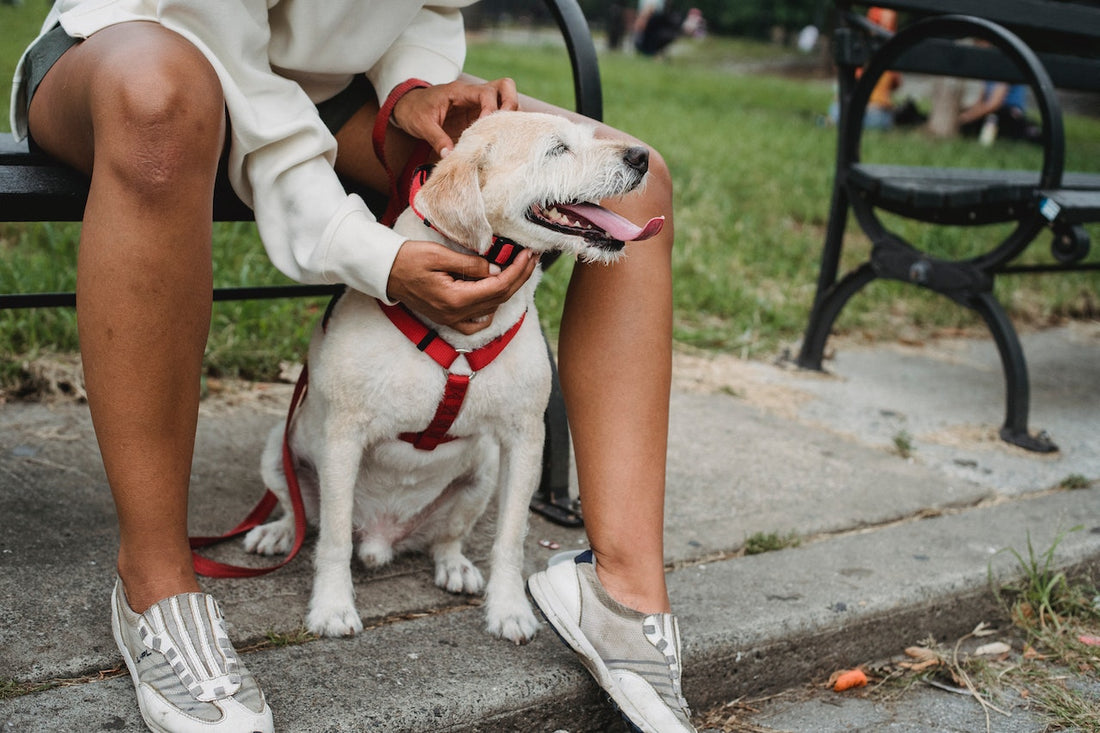
How to Put On a Dog Harness: Essential Tips for Every Pet Owner
Share
Ensuring the safety and comfort of your furry companions starts with knowing how to properly put on a dog harness. This guide is designed for pet owners who prioritize health and well-being, helping you make informed choices for your pets. By mastering the correct technique, you can significantly enhance your dog's walking experience.
Dog harnesses are becoming increasingly popular among pet owners for good reason. Unlike traditional collars, harnesses distribute weight evenly across a dog's body, minimizing the risk of injury. In this article, we'll explore various types of harnesses, the best methods for putting them on, and tips for achieving a perfect and secure fit.

Why Consider a Dog Harness?
Choosing a harness over a collar can profoundly affect your pet's health and enjoyment of walks. Harnesses provide better control, especially for larger breeds or enthusiastic pullers. They alleviate strain on the neck, lowering the risk of injuries and promoting overall wellness.
With a variety of harness styles availablefrom those suited for daily walks to specialized training harnessesfinding the right fit is essential not only for comfort but also for better management of behavioral issues.

Picking the Perfect Harness
Before diving into how to put on a dog harness, it's crucial to select the appropriate one. Here are some key elements to consider:
- Type: There are multiple types of harnesses, including front-clip, back-clip, and step-in designs.
- Size: Measure your dog's chest and neck to select a size that offers a snug yet comfortable fit.
- Material: Choose durable materials that can endure wear while remaining comfortable for your dog.

Steps to Put On a Dog Harness
Fitting a harness on your dog may seem overwhelming at first, but it quickly becomes a part of your routine with practice. Follow these steps for a seamless fitting process:
Step 1: Prepare the Harness
Start by laying the harness flat on a surface. Familiarize yourself with its different components and identify the front and back portions. Some harnesses may have adjustable straps that need to be adjusted prior to use.
Step 2: Position Your Dog
Encourage your dog to stand or sit comfortably. Using treats and positive reinforcement can make this process more enjoyable for your pet. For shy dogs, consider placing them on a stable surface, like a table, where they feel secure.
Step 3: Slip the Harness Over Your Dog's Head
Most harnesses come with a loop designed to fit over your dog's head. Carefully slide this loop over your dog's head, ensuring that the front section of the harness rests against their chest and shoulders. If your dog seems anxious, take breaks and offer rewards for calm behavior.
Step 4: Adjust the Straps
After positioning the harness, secure any adjustable straps around your dogs body. One common mistake is having the straps either too loose or too tight. A properly fitted harness should allow you to insert at least two fingers between the harness and your dogs body comfortably.
Step 5: Buckle Up
Once you're satisfied with the fit, secure the buckles. Ensure they click into place securely. If your harness has additional clips or buckles, double-check that they are properly fastened for maximum safety.

Common Mistakes to Avoid
As a responsible pet owner, being aware of common mistakes can help you avoid unpleasant situations:
- Too Loose: A harness that is too loose may result in your dog escaping.
- Too Tight: A harness that is overly tight can cause discomfort and restrict movement.
- Improper Use: Some harnesses are specifically designed for certain activities (e.g., pulling); ensure youre using the right type for its intended purpose.
Frequently Asked Questions
1. How can I tell if the harness fits correctly?
Your dog's harness should feel snug while allowing you to insert two fingers comfortably between it and your dog's body.
2. Is it okay to leave the harness on my dog all day?
While harnesses are generally safe, leaving one on for extended periods may lead to chafing.
3. What should I do if my dog resists the harness?
Introduce the harness gradually, use treats to encourage cooperation, and never force it onto your dog. Positive reinforcement works wonders!
Maintaining Your Dog's Harness
After you've mastered how to put on a dog harness, it's essential to ensure its longevity. Regularly inspect the harness for signs of wear and wash it according to the manufacturer's care instructions. Keeping it clean not only extends its life but also promotes hygiene for your dog.
For more information on choosing the right dog harness, check out this AKC article. Additionally, if you're interested in what your canine can eat besides dog food, take a look at what dogs can eat. You may also want to learn about behaviors like why dogs chatter their teeth when they smell something by visiting dog teeth chattering.
If you're interested in how to slow a horse down without pulling on its reins, you can find helpful tips here. Don't forget to learn about maintaining your dog's dental health as well; check out why dog teeth bleed when brushing.
As an Amazon Associate, I earn from qualifying purchases.
